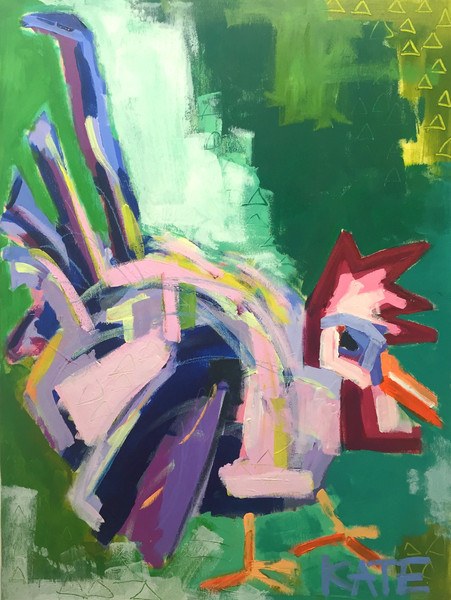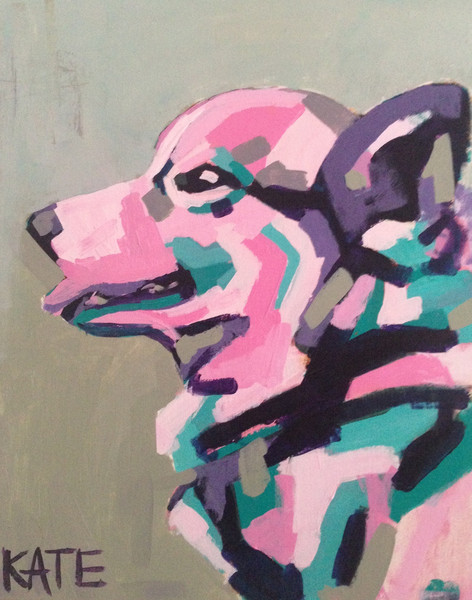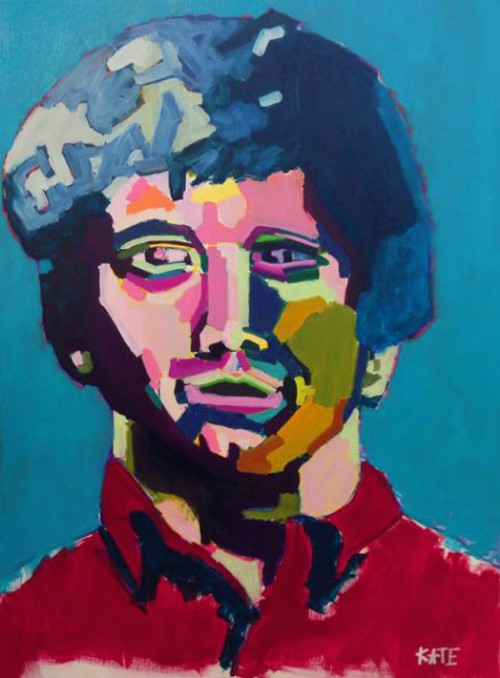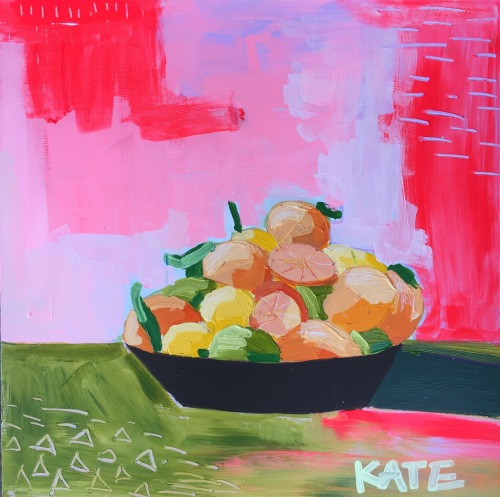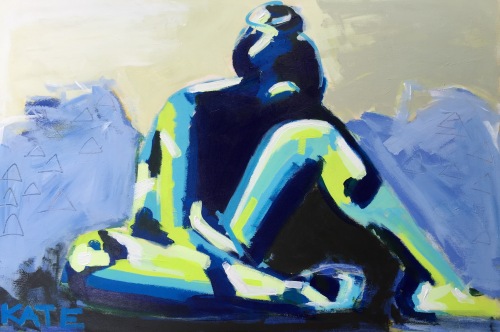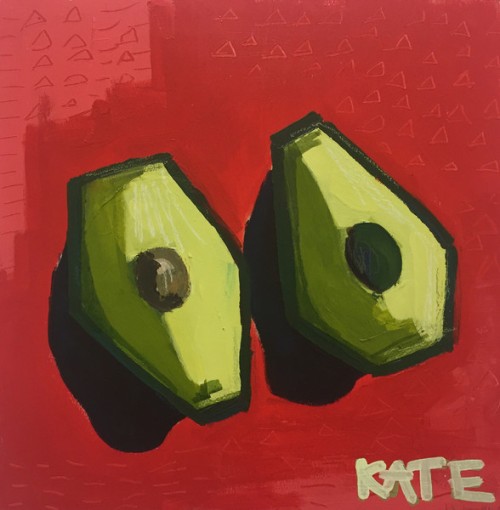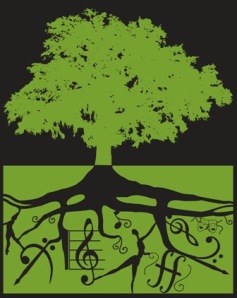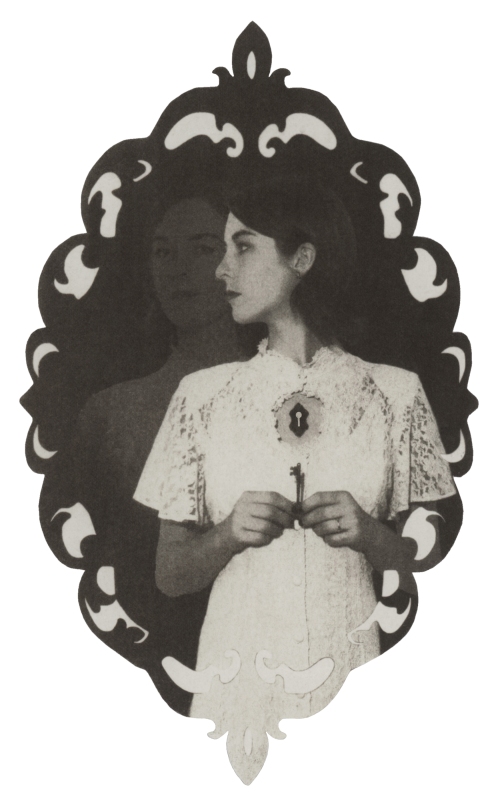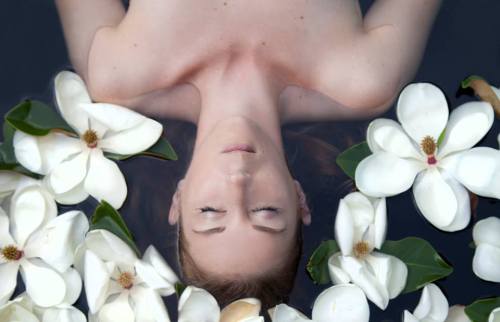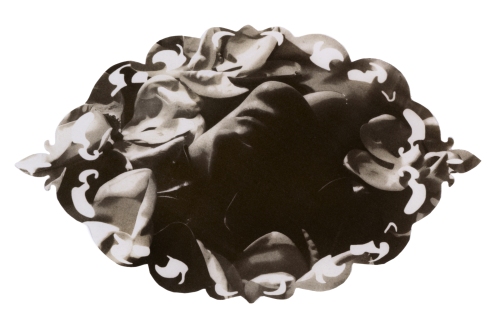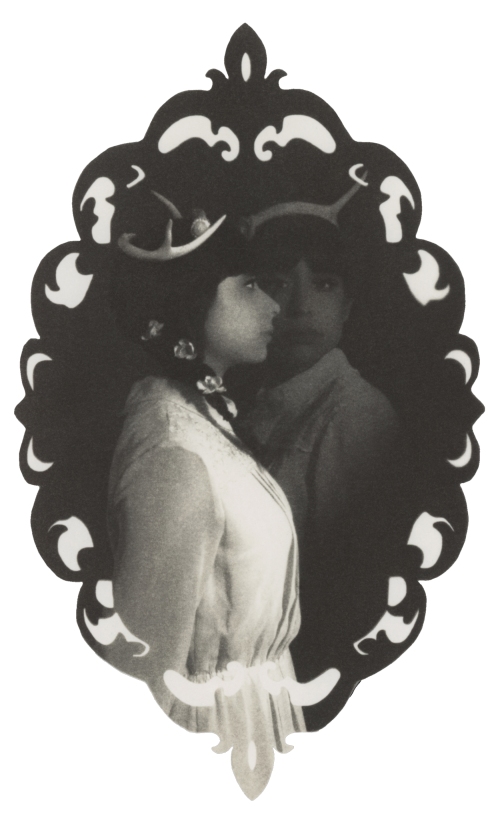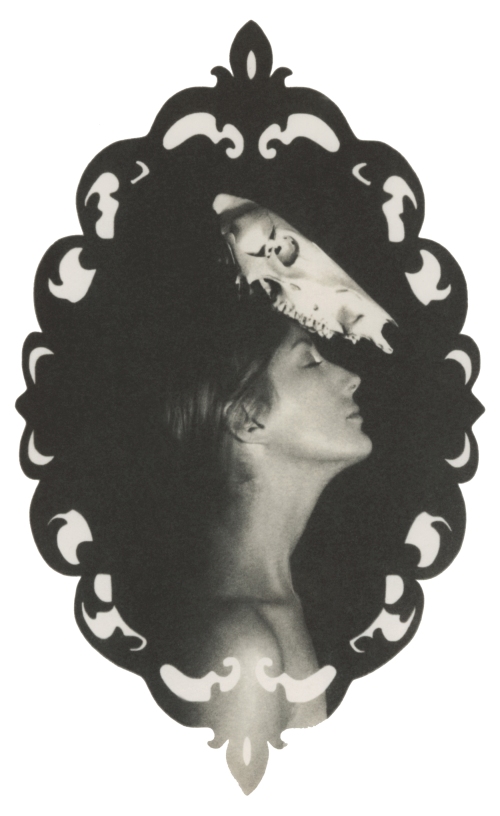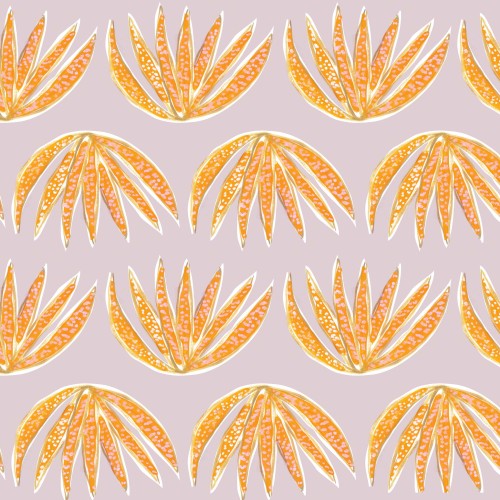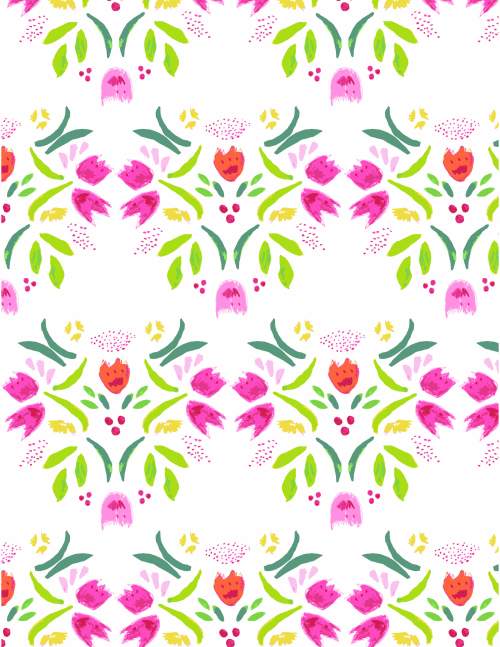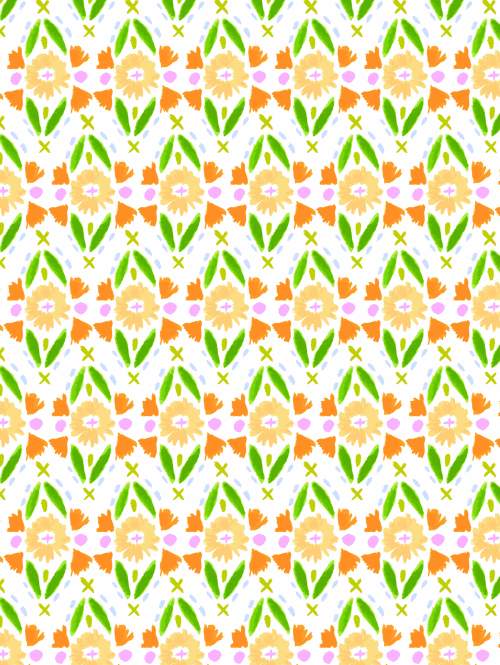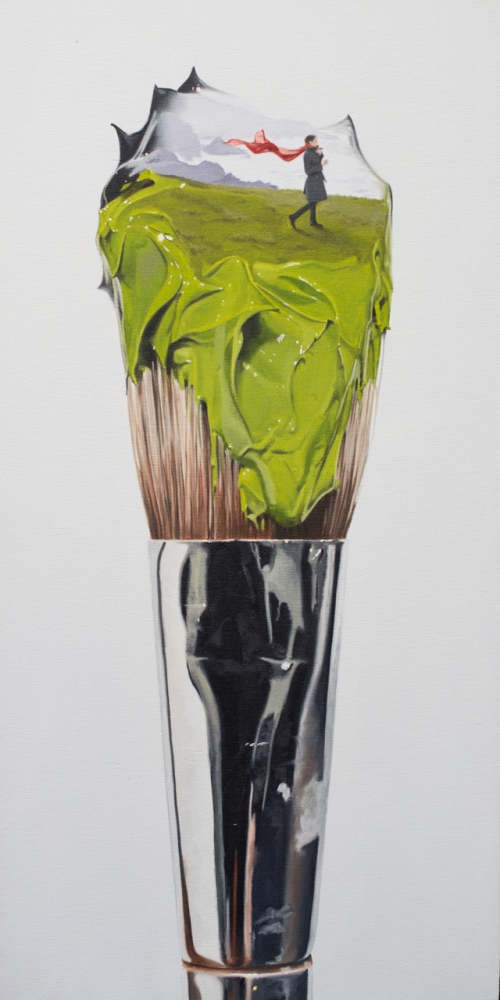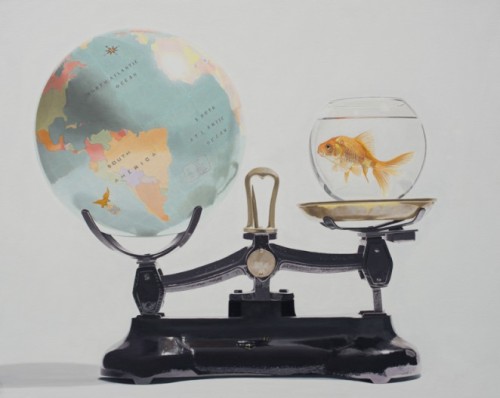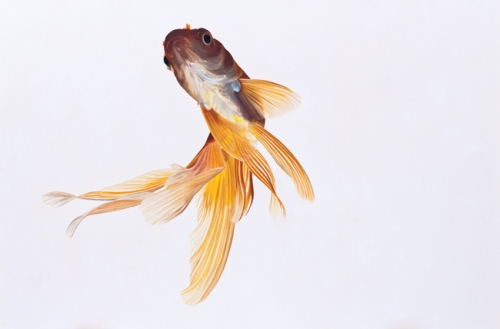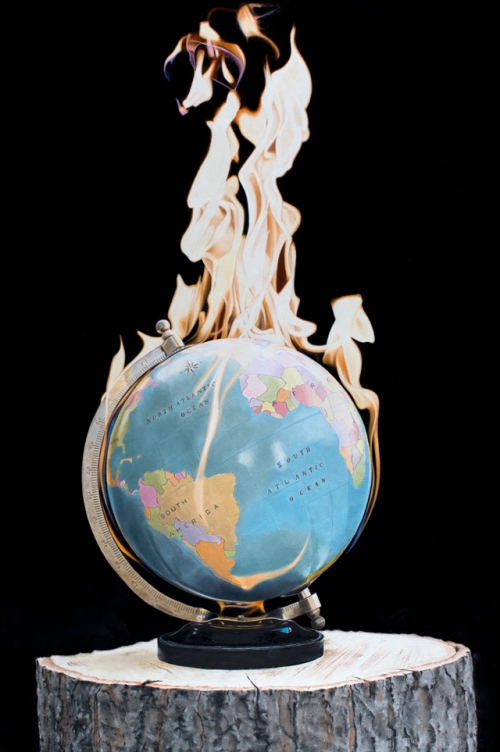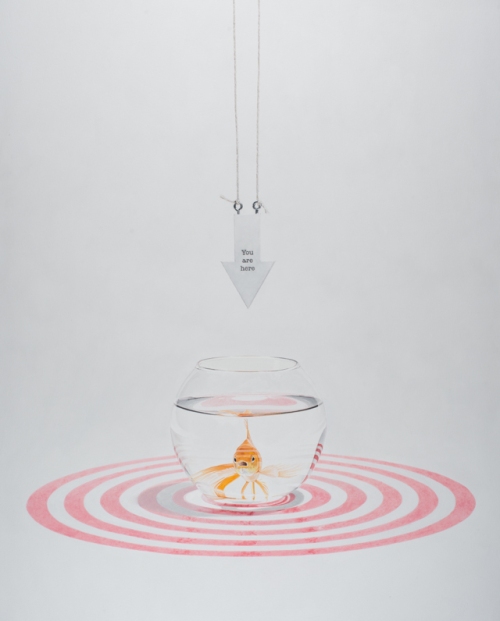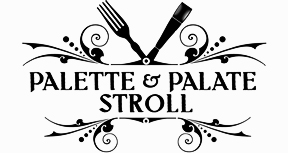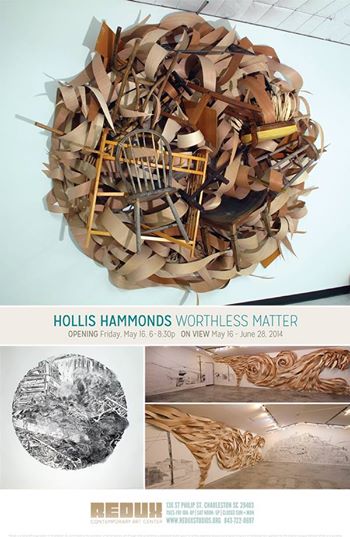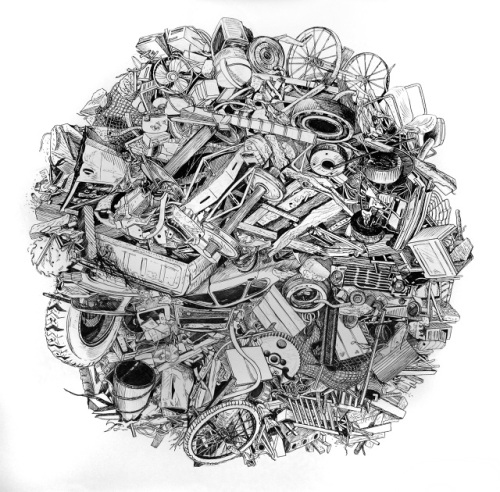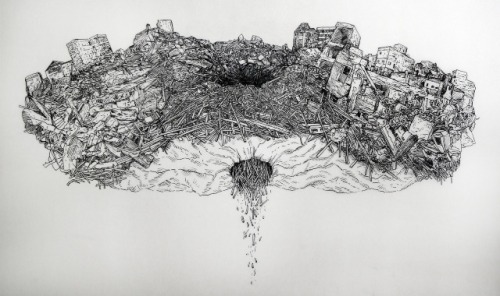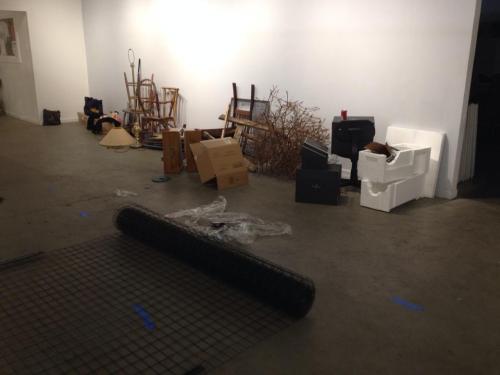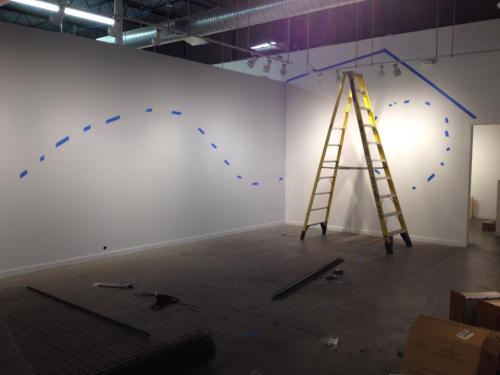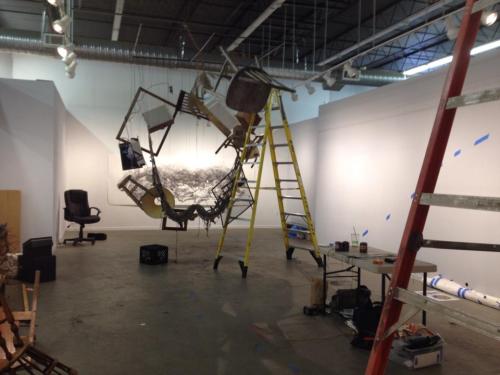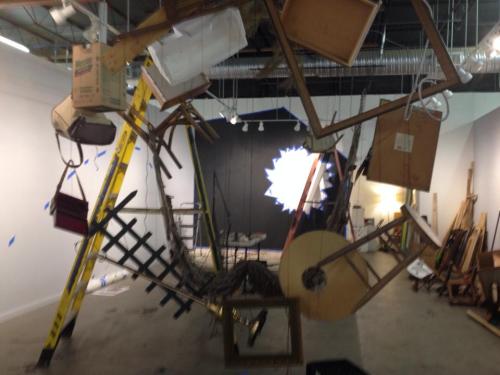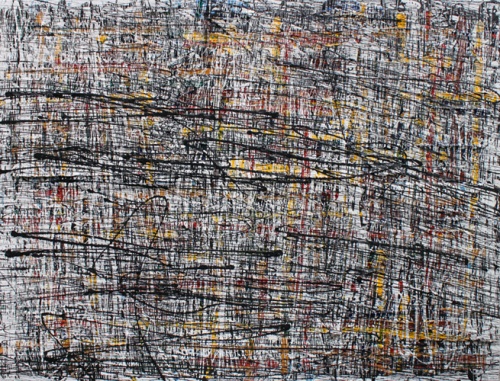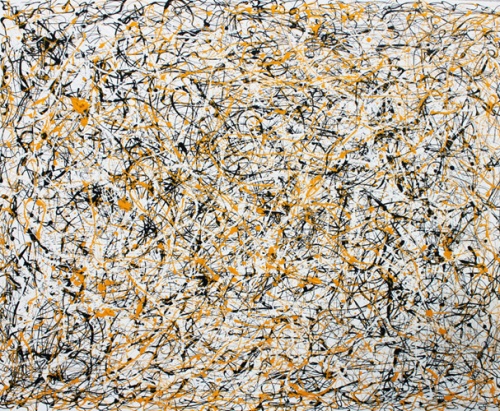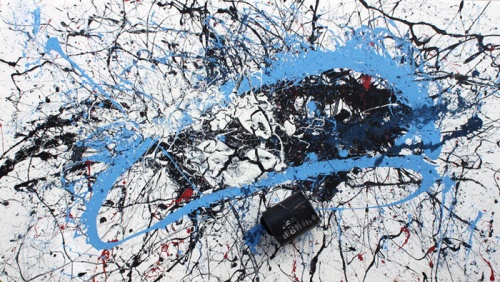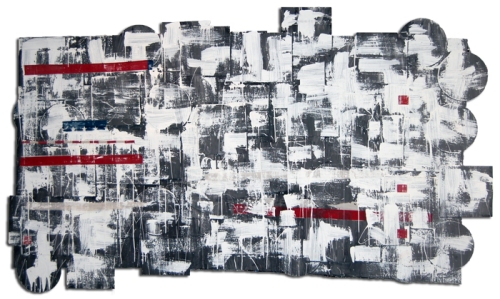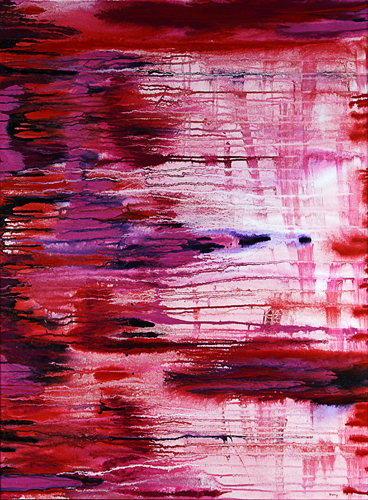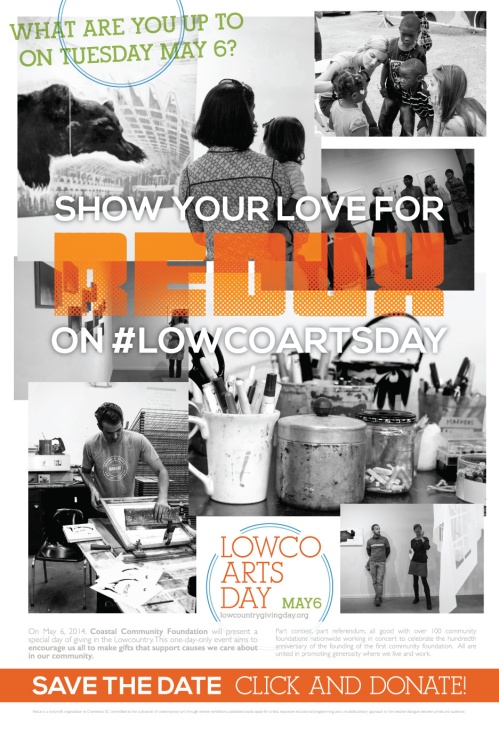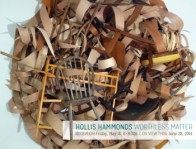You would like Kate Waddell. She has a serene, focused smile and a great handshake; her palette could have been shaken from a box of Tropical Mike and Ike’s.
Her studio is tiled with happy canvases: glossy roosters sprawled in bold, contented shades of punch and berry; breakfast settings and bowls of fruit with backgrounds blocked out in shades of pink and blood orange. Even the rich blues of Waddell’s figure studies have a warm, street-lit quality. One can’t help assuming that the world of her mind must be a pleasant place to be.
“I’m just trying to bring some joy to the art world,” she says, peacefully dabbing at a rooster-in-progress. Turning to smile at me, warmly tanned, her hair pulled off her neck in a loose ponytail. “There are people who try to be so difficult by doing this offensive stuff, but I’d rather paint what is beautiful,” she says, and the galleries- Bee Street Studios, Brown Dog– are lining up.
She’s fresh off a show held at Candlefish earlier this month, and had worked hard on having ‘cohesive palette and subjects’ for that, making everything all of a piece. “I rely on brushstrokes and line to help everything go well together.”
Her next show is back home in Columbus, Georgia- “I’m going to do more fruit stuff for that-” where she attended the same high school as Teil Duncan and Lulie Wallace, who’ve also limned out successful painting careers here in Charleston, creating similarly happy, comfortable canvases that make you smile.
Is there something in the water back home?
Waddell pauses. “The arts were really big at my high school,” she says.
I was intrigued. “Seriously?”
“It’s a smaller school, so they were able to really nurture us, fostering everyone to do what they liked best.”
We’re talking about brushstrokes, appealing lines, and I mention Wayne Thiebaud, one of my favorites. About a painting of his, Around the Cake, which hung for many years in my hometown museum. How’d I’d stand there and stare at it, transfixed, even when I was young- those thick, glossy strokes-!
“During my freshman year, we had this assignment. We had to paint a portrait of an artist and also of his work. I did Thiebaud! His lipstick tubes- that was when I fell in love with painting.” Waddell smiles privately, remembering the moment.
About Cofc- she “loved it, loved Charleston.” She worked for Teal Duncan, who is five years older. “There’s a stigma, you know, around arts majors at college”- but Duncan’s success as a painter here in Charleston made for a reassuring friendship. Waddell thought she could make it here, too. “I’m never leaving.”
There’s a comfortable pause as she paints, and I glance around at her studio. Stray pink balloons left over from a recent photo shoot, a tiny white wheelie cart with a cosmetic bag, a tiny pink moleskin. Waddell works next to a larger stainless steel cart lidded with glass. It makes for a big, roomy palette- generous dabs of those Mike and Ike colors- and on the shelves underneath I spy a spray can, a dog eared palette, a green toolbox.
The paints she isn’t using are arranged on a large wooden board brightly quilled with brass hooks, each one rolled up tidily and clipped in place with black binder clips. It’s a lovely system, made for her by a young architect friend, Dixon Prewitt.
“I’m not naturally a neat person. But I’m trying,” she says.
I ask Waddell about her process, if she works from photographs. “I take one image and then do variations on it,” she says, decisively, and then pauses, thinking. “I see the fruit stuff in my head, though. I do a lot of portraiture, too. From photos. That’s my favorite. And I usually play music- Young the Giant, Motherfolk. Chill music.”
She talks about using color to depict a mood.
“Sometimes you get a sense of color in being with people and objects. What’s that word-” Waddell says, hunting for it-
“Synesthesia.”
“Yes. That. But not dramatically,” she says. That small private smile again as Waddell turns back to her punch-colored world, where joy itself provides all the drama she needs.
Follow Kate on instagram at instagram @katewaddellart.
-article by Pauline West, a novelist and writer for Redux Contemporary Art Center. Her novel Evening’s Land won the 2014 Helene Wurlitzer Fellowship Award and 2015’s Carol Marie Smith Scholarship for Martha’s Vineyard Writer’s Residency. West is represented by Natalia Aponte of AponteLiterary.

